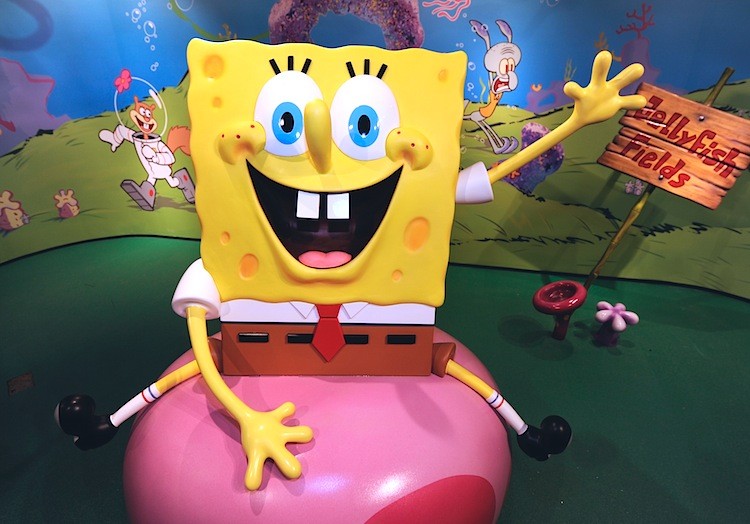Nearly every American home owns a television, and a study published in Pediatrics found that certain types of shows children watch harm their ability to learn.
“The Immediate Impact of Different Types of Television on Young Children’s Executive Function” by Angeline S. Lillard and Jennifer Peterson of the Department of Psychology at the University of Virginia was published online on Sept. 12.
Executive function is a broad term often used by psychologists and neuroscientists to describe the functions in the brain responsible for comprehension, problem solving, judgment, memory, reasoning, and self-control. Some shows reduced executive function in children, according to the study.
The study was conducted using 60 randomly selected 4-year-olds from middle-class to upper-middle-class families. The children were divided into three groups. One group watched a fast paced and fantastical cartoon, SpongeBob SquarePants, for nine minutes. The second group watched a slow-paced educational cartoon based on real life experiences, Caillou, for nine minutes. The third group drew pictures with markers and crayons for nine minutes. The children were given various tasks to complete immediately after the nine minutes of television or drawing.
“The Immediate Impact of Different Types of Television on Young Children’s Executive Function” by Angeline S. Lillard and Jennifer Peterson of the Department of Psychology at the University of Virginia was published online on Sept. 12.
Executive function is a broad term often used by psychologists and neuroscientists to describe the functions in the brain responsible for comprehension, problem solving, judgment, memory, reasoning, and self-control. Some shows reduced executive function in children, according to the study.
The study was conducted using 60 randomly selected 4-year-olds from middle-class to upper-middle-class families. The children were divided into three groups. One group watched a fast paced and fantastical cartoon, SpongeBob SquarePants, for nine minutes. The second group watched a slow-paced educational cartoon based on real life experiences, Caillou, for nine minutes. The third group drew pictures with markers and crayons for nine minutes. The children were given various tasks to complete immediately after the nine minutes of television or drawing.
The tasks included following instructions, counting, and waiting for a snack. The children who watched the fast paced cartoon waited significantly less time for a snack than compared to the children that watched the educational program or drew with crayons.
“I think that after watching fast paced fantastical cartoons children have a difficult time regulating their own behavior and concentration,” said Lillard in a phone interview. An important lesson to learn from this study, according to Lillard is that it may not be beneficial for children to watch cartoons at certain times, such as before school. “Children need to have these abilities and be able to self-regulate and control their behavior,” said Lillard.
The overall results of the study found that the 4-year-olds who watched the fast paced cartoon performed poorly on the assigned tasks. The 4-year-olds who watched the slow paced cartoon or drew pictures performed well on the tasks.
In fast paced fantastical cartoons the characters and scenes move fast and often make no logical sense. In an older study from 1988 called Imitation of Televised Models by Infants by Andrew N. Meltzoff, infants as young as 14 and 24 months were exposed to a television showing an adult playing with a toy. The young infants were then given the toy the next day and the results were that even the young infants imitated the adult from the television the previous day. The study in 1988 found the very youngest of children could take what they saw on television and incorporate what they watched into the real world.
When it comes to television, Lillard said, “I think that for parents, we should think of what kinds of information do I want my children to get and understand about the world.”
“I think that after watching fast paced fantastical cartoons children have a difficult time regulating their own behavior and concentration,” said Lillard in a phone interview. An important lesson to learn from this study, according to Lillard is that it may not be beneficial for children to watch cartoons at certain times, such as before school. “Children need to have these abilities and be able to self-regulate and control their behavior,” said Lillard.
The overall results of the study found that the 4-year-olds who watched the fast paced cartoon performed poorly on the assigned tasks. The 4-year-olds who watched the slow paced cartoon or drew pictures performed well on the tasks.
In fast paced fantastical cartoons the characters and scenes move fast and often make no logical sense. In an older study from 1988 called Imitation of Televised Models by Infants by Andrew N. Meltzoff, infants as young as 14 and 24 months were exposed to a television showing an adult playing with a toy. The young infants were then given the toy the next day and the results were that even the young infants imitated the adult from the television the previous day. The study in 1988 found the very youngest of children could take what they saw on television and incorporate what they watched into the real world.
When it comes to television, Lillard said, “I think that for parents, we should think of what kinds of information do I want my children to get and understand about the world.”






